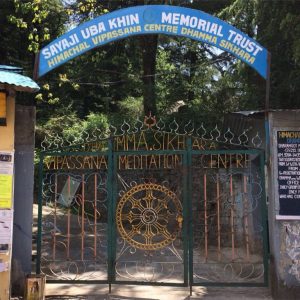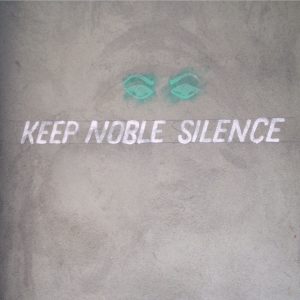 The first time I did Vipassana in 2009, I had a cosmic orgasm. We’d done three long, intense days of preparatory Anapanna meditation to sharpen the mind. Day four was Vipassana day, and I was keen to move my focus to somewhere – anywhere – else than my breath.
The first time I did Vipassana in 2009, I had a cosmic orgasm. We’d done three long, intense days of preparatory Anapanna meditation to sharpen the mind. Day four was Vipassana day, and I was keen to move my focus to somewhere – anywhere – else than my breath.
As we were guided into the Vipassana technique, I was engulfed by a terror that I was going to die. I felt my heart rate quicken, my breath speed up. But the moment my mind turned this fear into trust, bam! A shaft of energy shot up my spine, and my body, including all the aches and pains accumulated over three days of sitting, exploded and dissolved into millions of atoms and molecules. I floated free, ‘I’ disappeared. It was blissful. And I spent the next six days suspended in a sweet pain-free haze of subtle vibrations. It was still a challenge to meditate pretty much continuously for 10 hours a day, but perhaps not as challenging as it could have been.
 Fast forward eight years to my meditation cushion in Dhamma Sikhara, the Vipassana centre in a forest in the Himalayas, and there’s no such luxury as a cosmic orgasm for me. My second Vipassana course was tough, tough, tough. The pain was excruciating – not so much physical pain although there was a little of that too in my hip and shoulders – but an intense onslaught of emotional pain.
Fast forward eight years to my meditation cushion in Dhamma Sikhara, the Vipassana centre in a forest in the Himalayas, and there’s no such luxury as a cosmic orgasm for me. My second Vipassana course was tough, tough, tough. The pain was excruciating – not so much physical pain although there was a little of that too in my hip and shoulders – but an intense onslaught of emotional pain.
Anxiety reared its giant head on day five, sending my heart into palpitations and squeezing my lungs, and fear crouched nervously in my belly for the remainder of the course. Alongside this, anger and frustration screamed torrents inside my skull and intense sadness brought me to tears a number of times.
Vipassana teaches us to really feel what’s going on inside our body, and wowzers did I feel it acutely. So deeply in fact that I went to see the teacher in tears on day nine, explaining that I’d have to sit out the last day of the course as I couldn’t cope with the enormous pain of these emotions. And I’m so thankful I sought help from her, because she explained: ‘It’s because of your persistent work on this course that these repressed emotions have come to the surface, so the only thing you can do now is stay with them, feel them, and understand equanimously that they will pass. That is Vipassana.’ And so I continued with renewed strength to face them.
In this process I realised how much I’ve suppressed over the years, despite my kundalini yoga practice which encourages me to face and embrace my shadow side. The warrior in me wants to be fearless, wants to be endlessly capable and brave and strong, powering through, dismissing the part of me that quakes in her boots in the face of a rollercoaster life. And now I’m paying the price.
I left the course feeling so much brighter and lighter, although the anxiety is still fluttering in my heart. I’m staying present with it, watching it, acknowledging it and, in the spirit of Anicha, knowing that this too will pass. And a sweet Ra Ma Da Sa meditation with my friend Jen helped too.
Vipassana is such a deep experience, and I could only touch a little on it here. If you have any questions, please get in touch – yogigem@ymail.com
Sat nam x
